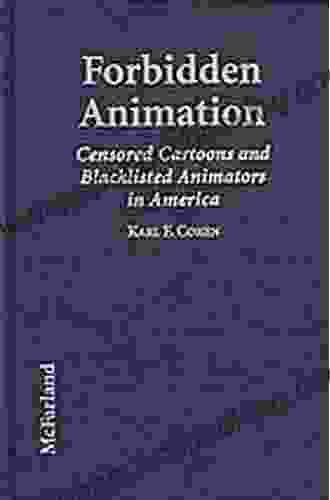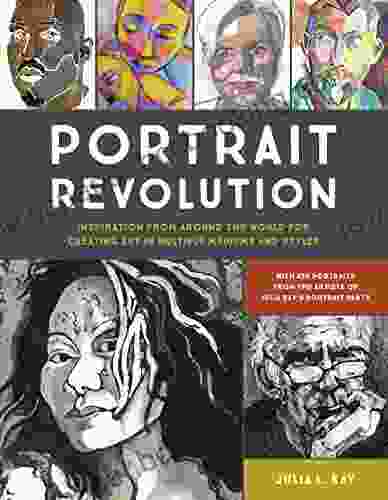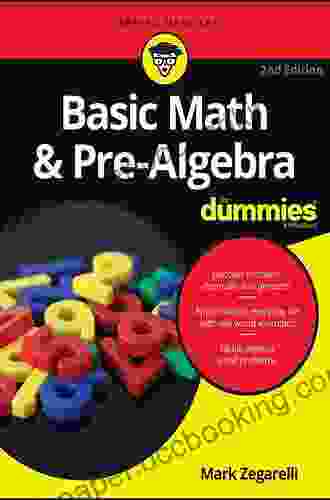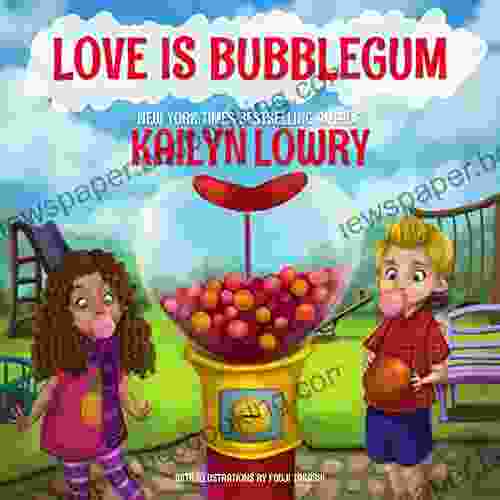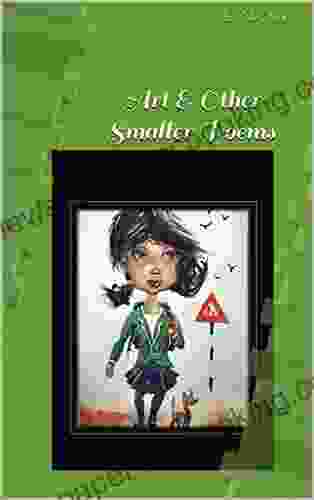Censored Cartoons and Blacklisted Animators in America: An Untold Tale of Art, Politics, and Power

The world of animation has always been a vibrant and captivating one, filled with memorable characters, enchanting stories, and boundless imagination. However, behind the seemingly innocent facade of our favorite cartoons lies a darker and more complex narrative – one of censorship and suppression.
4.5 out of 5
| Language | : | English |
| File size | : | 2553 KB |
| Text-to-Speech | : | Enabled |
| Screen Reader | : | Supported |
| Enhanced typesetting | : | Enabled |
| Word Wise | : | Enabled |
| Print length | : | 241 pages |
During the mid-20th century, America witnessed a chilling era of political and social upheaval, known as the McCarthy period. This time, characterized by widespread fear of communism, paranoia, and government overreach, cast a long shadow over the entertainment industry, including the world of animation.
In this article, we will delve into the fascinating yet disturbing history of censored cartoons and blacklisted animators in America. We will uncover the untold stories behind beloved characters, subversive messages, and the societal forces that shaped this unique chapter in animation.
The Golden Age of Animation
The 1930s and 1940s marked the "Golden Age of Animation," a period of unprecedented creativity and innovation in the industry. Studios like Disney, Warner Bros., and MGM churned out iconic characters such as Mickey Mouse, Bugs Bunny, and Tom and Jerry, capturing the hearts and imaginations of audiences worldwide.
However, beneath the surface of this golden era, simmered a growing tension between animators and studio executives. Many animators were eager to use their art as a platform for social commentary and political satire. They subtly wove subversive messages into their cartoons, poking fun at authority, criticizing social norms, and even challenging the status quo.
The Red Scare and Hollywood Blacklist
The post-World War II climate of fear and paranoia provided a fertile ground for the "Red Scare" – a widespread belief that communist sympathizers had infiltrated American society, including the entertainment industry.
In 1947, the House Un-American Activities Committee (HUAC) launched a series of hearings to investigate alleged communist infiltration in Hollywood. The hearings turned into a witch hunt, with actors, writers, directors, and other industry professionals being accused of communist sympathies. Many individuals were blacklisted, meaning they were effectively banned from working in the entertainment industry.
Censored Cartoons
The Red Scare had a chilling effect on animation as well. Studios, fearing government scrutiny and public backlash, began to censor cartoons with even the slightest hint of political or social commentary. Scenes were cut, characters were redesigned, and entire episodes were shelved.
For instance, the iconic Warner Bros. character, Pepe Le Pew, was criticized for his aggressive and predatory behavior towards female characters. In response, his character was toned down and made less assertive.
Another example is the 1946 Disney short film "Victory Through Air Power." Initially intended as a propaganda film to promote American air power, the film was heavily censored after the war due to its perceived militaristic tone.
Blacklisted Animators
Alongside the censorship of cartoons, numerous animators found themselves blacklisted during the McCarthy era. Some of the most prominent names included Art Babbitt, Friz Freleng, and John Hubley.
Art Babbitt, a brilliant animator known for his work on Snow White and the Seven Dwarfs, was blacklisted for his alleged communist sympathies. Despite his exceptional talent, he struggled to find work in the industry and eventually died in poverty.
Friz Freleng, creator of Bugs Bunny and other beloved Looney Tunes characters, was also targeted by HUAC. He was accused of using his cartoons to promote communist propaganda and was forced to tone down the satirical elements of his work.
The Legacy of Censorship and Blacklisting
The McCarthy era left an indelible mark on the American animation industry. The suppression of creativity and the silencing of dissenting voices had a profound impact on the development of animated storytelling.
Many historians argue that the censorship and blacklisting stifled innovation and prevented animators from fully exploring the potential of their medium. It took years for the industry to recover from this traumatic chapter and regain its former glory.
However, the legacy of censored cartoons and blacklisted animators also serves as a poignant reminder of the dangers of political repression and the importance of freedom of expression in artistic endeavors.
Rediscovering Censored Cartoons and Blacklisted Animators
In recent years, there has been a growing interest in rediscovering the censored cartoons and the work of blacklisted animators. Archives, film festivals, and online platforms are showcasing these hidden gems, allowing audiences to appreciate the artistry and subversion that were silenced during the McCarthy era.
Films such as "The Forbidden Animation" and "The Hollywood Blacklist" have shed light on the plight of blacklisted animators and the impact of censorship on animation history.
The story of censored cartoons and blacklisted animators in America is a fascinating and sobering one. It is a testament to the power of art to challenge authority and reflect the complexities of society.
By delving into this untold history, we not only appreciate the forgotten works of talented animators but also safeguard the freedom of expression that is essential for a vibrant and diverse creative landscape.
As we celebrate the enduring legacy of American animation, let us remember the artists who were silenced and the cartoons that were censored. Their stories serve as a reminder of the indomitable spirit of creativity and the importance of protecting it from the chilling effects of fear and repression.
4.5 out of 5
| Language | : | English |
| File size | : | 2553 KB |
| Text-to-Speech | : | Enabled |
| Screen Reader | : | Supported |
| Enhanced typesetting | : | Enabled |
| Word Wise | : | Enabled |
| Print length | : | 241 pages |
Do you want to contribute by writing guest posts on this blog?
Please contact us and send us a resume of previous articles that you have written.
 Book
Book Novel
Novel Page
Page Chapter
Chapter Text
Text Story
Story Genre
Genre Reader
Reader Library
Library Paperback
Paperback E-book
E-book Magazine
Magazine Newspaper
Newspaper Paragraph
Paragraph Sentence
Sentence Bookmark
Bookmark Shelf
Shelf Glossary
Glossary Bibliography
Bibliography Foreword
Foreword Preface
Preface Synopsis
Synopsis Annotation
Annotation Footnote
Footnote Manuscript
Manuscript Scroll
Scroll Codex
Codex Tome
Tome Bestseller
Bestseller Classics
Classics Library card
Library card Narrative
Narrative Biography
Biography Autobiography
Autobiography Memoir
Memoir Reference
Reference Encyclopedia
Encyclopedia Sadaf Farooqi
Sadaf Farooqi Stacey Marie Kerr
Stacey Marie Kerr Judith Koke
Judith Koke Robert Parkes
Robert Parkes Maggie Marr
Maggie Marr Judy Schachner
Judy Schachner Judith Heumann
Judith Heumann Kara Allan
Kara Allan Justin Driver
Justin Driver Judith Pearson
Judith Pearson Karen Jean Matsko Hood
Karen Jean Matsko Hood Kate Flint
Kate Flint Karl G Yoneda
Karl G Yoneda Nancy Carter Crump
Nancy Carter Crump Pete Ripmaster
Pete Ripmaster Ken Palmer
Ken Palmer Karen Kaufman Wilson
Karen Kaufman Wilson Kara Goldin
Kara Goldin Julia Rutland
Julia Rutland Julian Dibbell
Julian Dibbell
Light bulbAdvertise smarter! Our strategic ad space ensures maximum exposure. Reserve your spot today!
 D'Angelo CarterFollow ·8.5k
D'Angelo CarterFollow ·8.5k Chris ColemanFollow ·8.4k
Chris ColemanFollow ·8.4k Matthew WardFollow ·17.6k
Matthew WardFollow ·17.6k Jesse BellFollow ·2.8k
Jesse BellFollow ·2.8k Garrett PowellFollow ·12.1k
Garrett PowellFollow ·12.1k Melvin BlairFollow ·2.8k
Melvin BlairFollow ·2.8k David MitchellFollow ·4.6k
David MitchellFollow ·4.6k Edmund HayesFollow ·12.9k
Edmund HayesFollow ·12.9k
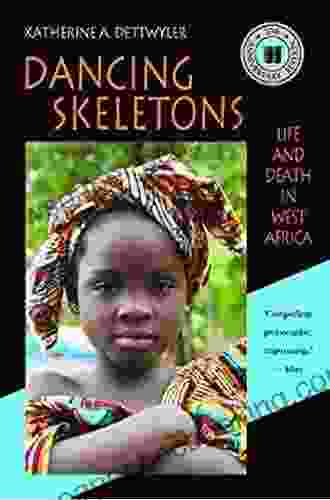
 Drew Bell
Drew BellLife and Death in West Africa: A Groundbreaking Account...
A Journey Through...
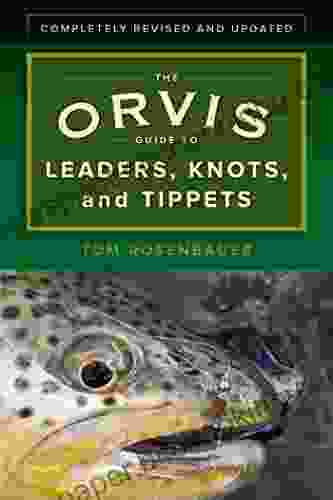
 Stanley Bell
Stanley BellMaster the Art of Fly Fishing Line Management: A...
Are you an avid fly...

 Ernest Powell
Ernest PowellUnleash Your Entrepreneurial Spirit: A Comprehensive...
In the competitive...

 Derrick Hughes
Derrick HughesMaster Your Ride: The Ultimate Guide to Road Bike...
Are you ready to elevate your cycling...

 Camden Mitchell
Camden MitchellUnveiling the Enchanting World of American Royals III:...
Embark on a Captivating Royal Saga: American...
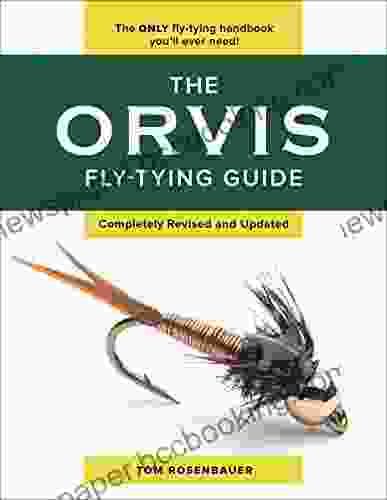
 Richard Simmons
Richard SimmonsUnveiling the Secrets of Fly Tying: A Comprehensive...
In the realm of...
4.5 out of 5
| Language | : | English |
| File size | : | 2553 KB |
| Text-to-Speech | : | Enabled |
| Screen Reader | : | Supported |
| Enhanced typesetting | : | Enabled |
| Word Wise | : | Enabled |
| Print length | : | 241 pages |


